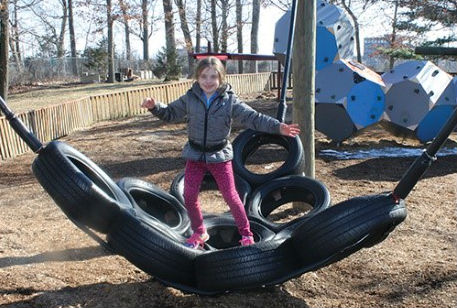One outcome of vestibular functions is spatial awareness. This skill may be defined as the ability to perceive the shape and position of objects in the environment and/or the ability to appreciate the position of oneself in relationship to objects in the environment.
The vestibular system stimulates the muscles of the eyes and ears so as to sharpen their ability to discriminate among sensory details by comparing and contrasting language with visual images. These skills impact basic daily living tasks such as:
- Dressing – turning a Tee shirt so that the head and arms fit through the appropriate holes, Buttoning – orienting each button so that it fits through the button hole, Tying – shoe laces
- Working with puzzles, problem solving
- Arranging pictures so that they tell a story
These skills are also needed in school as the child learns to visualize objects and imagine their moves in space as needed for success in reading, math and science.


The vestibular system is intricately wired into the production of:
- posture and balance
- Motor control,
- Functional vision
- Hand function
This means that children who have poor vestibular function due to low tone, poor nutrition, frequent ear infections, etc. are likely to have difficulty integrating visual skills, auditory/language skills, motor skills and social skills needed for learning.


Comments are closed.